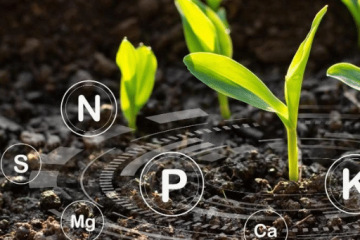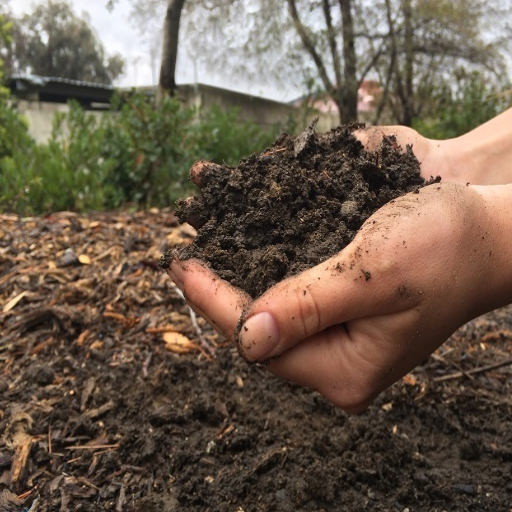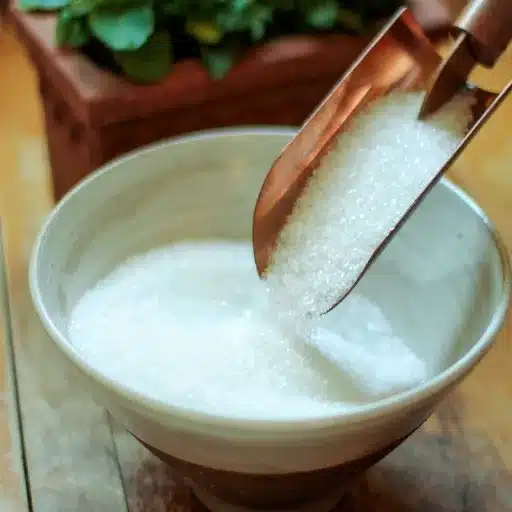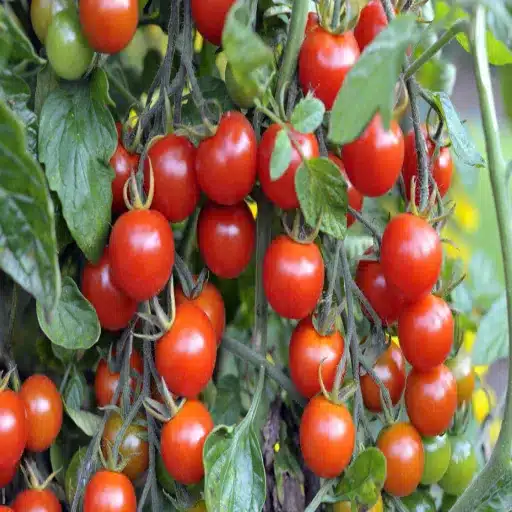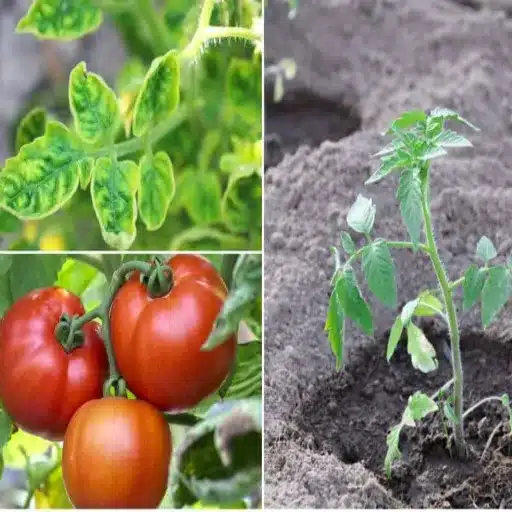Maintaining a healthy, thriving garden or lawn requires more than just water and sunlight – it demands the right nourishment. Organic fertilizers have become a staple for eco-conscious gardeners and homeowners, offering a sustainable way to enrich the soil and promote robust plant growth without relying on synthetic chemicals. But with so many options available, how do you choose the best organic fertilizer for your specific needs? This guide will walk you through the vital factors to consider and explore the top organic fertilizers, ensuring your garden and lawn flourish naturally while preserving the environment. Whether you’re cultivating a vegetable patch, tending vibrant flower beds, or keeping your grass lush, this article is your roadmap to achieving vibrant, healthy greenery responsibly.
Understanding Organic Fertilizers

What is Organic Fertilizer?
Organic fertilizer means any nutrient-rich material with natural origins. Common examples are plant waste, animal manure, compost, and several mixtures of organic matter. Organic fertilizers break down slowly, depositing the nutrients into the soil with great slowness. Soils gain nutrients in the form of essential fertilizers like nitrogen, phosphorus, and potassium. This process also improves soil texture and texture for microbial development, allowing plants to grow better in a sustainable way.
One of the most significant benefits of organic fertilization is that it preserves soil health in the long term. Organic fertilizers promote beneficial microorganisms as well as soil aeration, thus facilitating nutrient cycling that feeds plants without the build-up of toxic chemicals. Therefore, they provide an excellent means to maintain the ecosystem and to protect soil from degradation that results from improper use of synthetic fertilizers.
In addition, organic fertilizers are also environmentally friendly because they reduce the risk of nutrient runoff, which contaminates waterways. They are biodegradable and fit into natural processes, which means that they have relatively lower carbon footprints in comparison to agricultural practices. Due to this slow release, the interval between applications is significantly reduced, making the option economical and sustainable for gardeners, farmers, and landscapers who want to grow healthier, happier plants with the smallest environmental impact possible.
Benefits of Using Organic Fertilizers
- Improves Soil Structure: Organic fertilizers improve the physical condition of the soil by increasing the organic matter. This allows it to better aerate, retain water, and allow root penetration, giving rise to healthier plants.
- Promotes Microbial Activity: Organic fertilizers’ natural composition is conducive to the proliferation of beneficial microorganisms in the soil. These microorganisms help in breaking down the organic material, hence making nutrients available to plants while creating a balanced ecosystem. Research shows that soils enriched with organic matter harbor a biomass between 30-50% higher than soils lacking in organic matter.
- Reduces Environmental Pollution: Unlike synthetic fertilizers that tend to leach into the waters and awaken such dangers as eutrophication, organic fertilizers are biodegradable and would decompose naturally. Therefore, the chances of runoff or contamination of groundwater will be very low. The United States Environmental Protection Agency (EPA) report states that nitrogen runoff might even be reduced by 40% with organic fertilizer use.
- Provides Long-Term Nutrients: And in time, nutrients would be released slowly into the organic fertilizers, through the natural patterns of growth of plants, and minimizing the wastage of nutrients. Being slow in releasing nutrients in a fairly consistent way greatly reduces the rate they need to apply them. Some research demonstrates that plants fertilized with organic materials sustain nutrients throughout the growing season, with 20-30% less nutrient depletion than soils fertilized chemically.
- Enhances Plant Health and Yield: Organic fertilizers contain diverse macronutrients and micronutrients that favor plant growth. They help in developing stronger roots and resist diseases, increasing crop output. In a study carried out on demo plots, it was observed that the crops grown with organic fertilizers produced 15% more yield on average than crops fertilized with chemicals, with relatively low loss due to pest attacks.
Such benefits highlight the importance of employing organic fertilizers from an agrotechnology and gardening perspective towards a cleaner work environment.
Types of Organic Fertilizers
Generally, organic fertilizers can be divided into three main types based on their origin and composition:
- Animal-Based Fertilizers: Fertilizers of animal origin come from animal waste or by-products, with nutrients like nitrogen, phosphorus, and potassium. Some common examples are manure, bone meal, and fish emulsions. Manure is great for improving soil texture and boosting microbial activity, while bone meal is a source of phosphorus necessary for root growth.
- Plant-Based Fertilizers: Those fertilizers originating from plants include compost, green manure, and extracts of seaweed, which serve to enhance the organic matter content within the soil. Compost ameliorates soil fertility by increasing humus content. Green manure crops, on the other hand, are grown to be plowed into the soil to increase its nitrogen levels. Seaweed fertilizers supplement trace minerals as well as help plants resist stress-induced factors.
- Mineral-Based Organic Fertilizers: Inorganic fertilizers have a mineral base. This would include substances like rock phosphate and gypsum. I consider it a good measure for long-term soil fertility improvement, as it releases nutrients slowly into the soil. Gypsum, on the other hand, adds calcium and sulfur to the soil to improve its structure and solve salinity problems.
Each class of organic fertilizer serves a definite purpose depending on the needs of the soil and crops. On choosing any one of them, growers can support soil health, increase productivity, and reduce environmental burden-all acceptable practices under sustainable agriculture.
Top Organic Fertilizers for Gardens
Best Organic Fertilizers for Flower Gardens
- Bone Meal: It is an excellent source of phosphorus and calcium, which are essential in forming roots and developing blooms for flower gardens. It acts as a slow-release fertilizer so the nutrients can be released as plants require. For best results, apply them during planting or work them gently into the soil around established plants.
- Composted Manure: Such manures should be well-aged cow or chicken manure that supplies nutrients in perfect balance to nitrogen, phosphorus, and potassium, which promote rich and healthy growth of flowers. The composting cycle kills pathogens, making the manure safe for garden use. Furthermore, it enhances the structure of soil and water retention properties, creating an excellent environment for flowers to flourish.
- Fish Emulsion: Fish emulsion, being one of the liquid fertilizers rich in nitrogen, is often used to give a little extra emphasis to the leafy growth and general vigor of the plants. It provides immediate nutrition and could be applied via foliar feeding or soil application. It is unsuitable to overuse it, though, as there is a very high nitrogen content, which tends to over-fertilize plants.
- Seaweed Extract: Seaweed extract, obtained from ocean algae, is a superb source of micronutrients, including potassium and trace minerals. It helps flower development, increases the plants’ resistance to stress, and aids the soil in microbial activity. The seaweed extract could be sprayed onto plant foliage or mixed with irrigation water regularly.
- Worm Castings: Worm castings are materials excreted by earthworms. These nutrient-rich organic matters enhance flowering and have drainage and aeration properties. Worm castings contain a variety of microorganisms that contribute to the health of the soil and ensure vigorous growth of plants. They can either be incorporated into the potting mix or applied as a top dressing around flower beds.
Towards the overall success of the flower layout, combining these fertilizers as per the needs of the plant goes a long way. Correct usage of these organic fertilizers brings about plant health and an eco-friendly design culture.
Organic Tomato Fertilizers: Boosting Growth and Yield
Organic fertilizers contribute essentially toward optimizing tomato plant growth and fruit production, while supplying the necessary nutrients and amending the soil for improved structure and biological activity. Compared to their synthetic counterparts, organic fertilizers slowly release nitrogen, phosphorus, and potassium into the soil to present plant developmental stages with a sustained nutrient supply. Tomatoes, being heavy feeders, greatly appreciate compost, aged manure, bone meal, and fish emulsion, which supply macro- and micronutrients vital for the growth of foliage, flowering, and fruiting stages.
Besides, organic fertilizers go a long way in optimizing soil health by boosting microbial activity. The application of fish emulsion pumps in trace elements such as calcium and magnesium, whilst boosting populations of beneficial soil microorganisms that facilitate the breakdown of organic matter into nutrients available to plants, and enhance root growth through the microbial funk of symbiotic microbial-plant relationships. Indeed, when composted, manure should promote increased aeration and retention of water in the soil, so that tomato plants can survive under less than ideal watering conditions, which is crucial for keeping steady growth and averting problems like blossom end rot.
Best results require strategically applying organic fertilizers promptly. When compost or bone meal in granular form is worked into the soil during preparation, seedlings will have some initial supply of nutrients. During the growing season, frequent feeding with diluted liquid fertilizers such as seaweed extract or compost tea will provide energy for sustained development without the risk of over-fertilization. This flexible combination of fertilizers improves the yield and quality of tomatoes and works in environmentally sustainable processes, making this highly recommended for gardeners and agricultural producers alike.
Choosing Fertilizers for Organic Fruit and Nut Trees
When fertilizing organic fruit and nut trees, an important consideration should be given to fertilizers that meet organic farming standards and provide sturdy nutrition for healthy growth and fruit development. Fertilizers such as compost, well-rotted manure, or certified organic commercial products are good choices as they enrich the soil slowly with nitrogen, phosphorus, and potassium so that they remain available for a prolonged period to the trees. It is also advisable to conduct soil tests before application to determine whether particular deficiencies or imbalances exist and to make appropriate adjustments.
Fertilizer application around numerous fruit and nut tree species is most effective when applied in amounts commensurate with growth-stage needs. Generally, during the early stage of development, more nitrogen encourages a rigorous leaf development process. At the reproductive stage, however, potassium and phosphorus are necessary for fruit and nut production. Bone-meal fertilizer, high in phosphorus, and wood ash, rich in potassium, are good substances to apply to the soil. Furthermore, supplementing with micronutrients such as zinc, boron, and manganese through foliar sprays or soil amendments will help with flowering and fruit set.
The adoption of such practices enhances yield production, in addition to increasing microbial activity in the soil and its organic matter content, thus offering long-term soil-health benefits. Organic growers can opt for fertilization based on scientific facts and the latest agronomic research while being mindful of specific local soil conditions in order to have optimum productivity and ecological sustainability.
Organic Lawn Fertilization
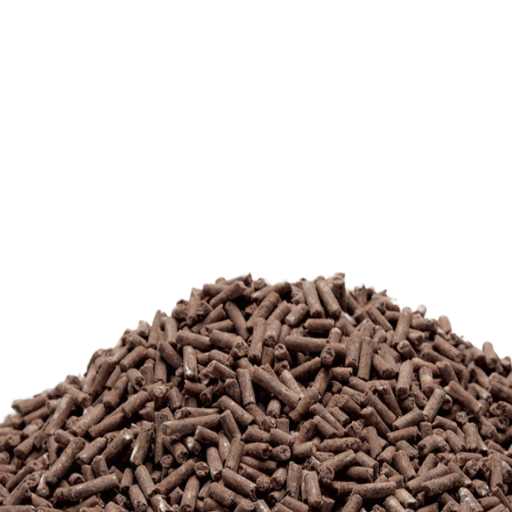
Best Organic Lawn Fertilizers
The right organic lawn fertilizer is integral in the maintenance of optimum turf health and environmentally friendly practices. Organic lawn fertilizers come from natural materials like composted manure, bone meal, blood meal, and seaweed extract. These fertilizers provide nutrients in slow release while improving soil texture and microbial activities. The favorite products have a balanced ratio of nutrients, like 10-10-10, or they provide slow-release nitrogen to the lawn to keep it healthy for long periods.
Likewise, among premium fertilizers are alfalfa meals, which raise nitrogen levels, and milorganite, which is a slow-release source of organic nitrogen. Kelp meal is reputed for supplying trace minerals and promoting plant endurance. For phosphorus needs, rock phosphates provide a natural and long-term supply, and greensand helps with potassium availability as well as soil aeration. Utilized together with soil tests, these fertilizers have established their effectiveness, hence an exact application of nutrients can be done.
Custom, applied fertilizers make grass denser with deep color and remain resistant to toxins and diseases if working in tandem with good core cultural practices like mowing, aerating, or even irrigation. Using current agronomic knowledge for nutrient cycling then sustains the lawn’s ecosystem. For the best result, applications should be done with organic fertilizers during the growth spurts in spring and fall, depending on local climate conditions.
How to Use Organic Lawn Fertilizers Effectively
- Assess Soil Quality: Run soil analysis before organic fertilization to know about nutrient deficiency, pH value, and organic matter content in the soil. By analyzing soil health, one can take informed decisions about nutrient supplementation, under application of which leads to runoff of nutrients that will harm the environment.
- Pick Proper Fertilizers: Choose organic fertilizers based on the actual requirements of your lawn that focus on designs giving balanced nutrients of nitrogen (N), phosphorus (P), and potassium (K). Look for such fertilizers containing composted manure, bone meal, or feather meal, among other organic matter, that help in soil conditioning while releasing nutrients.
- Time Applications Strategically: A good time to use fertilizers aligns, in principle, with active growth in the lawn, which is usually in early spring or late fall. Fertilizer application during those times ensures nutrients are absorbed well by the plants and that the roots develop properly, leading to stronger, healthier lawns.
- Set Application Rates: Rates should conform to manufacturers’ instructions and observations of seasonal tooth results. Over-application leads to a nutrient imbalance and poses threats to nearby water systems; meanwhile, under-application leads to insufficient handling of the lawn in terms of nourishment.
- Apply Fertilizer Appropriately: The lawn treatment effect is surpassed if an uneven cover is provided. They cause a patchy growth resulting in an ugly appearance, so use an appropriate spreader, such as a broadcast or drop spreader, to apply the fertilizer evenly. Water immediately following fertilizer application to prevent runoff times for good penetration of nutrients into the soil and root zone.
- Observe the Efficacy of Practice and Adjust Accordingly: Changes in grass color and density, and vigor give good clues regarding fertilizer impact. Annual follow-up soil tests can be done to check nutrient levels so that fertilizer usage can be adjusted accordingly. The continuous cycle of observation and adjustment ensures the eventual development of a healthy lawn while simultaneously promoting sustainable practices.
The marriage of right application practices coupled with continuous monitoring can allow the use of organic fertilizers for lawns to meet ecological and aesthetic goals so that a robust lawn can be built without compromising environmental stewardship.
Creating a Sustainable Lawn Care Routine
Establishing a sustainable lawn care routine requires adopting practices that inform ecological conservation as opposed to effective lawn management. Proper mowing techniques go to the root of the matter: grass may be kept between 2.5-4 inches to reduce evaporation and encourage deeper rooting, making it more tolerant during dry spells. Another lawn maintenance behavior would be grasscycling by allowing some of the grass clippings to remain on the lawn, thereby aiding in natural nutrient recycling and lessening the requirements of synthetic fertilizers.
Watering approach is another crucial aspect affecting sustainability: employing a smart irrigation system or watering early mornings cuts water wastage through evaporation and assures thorough watering for root growth. In fact, researchers recommend delivering an inch or 1.5 inches of water weekly to a lawn, depending upon soil type and ambient conditions to avoid overwatering.
Additionally, soil health assessment is super important. Core aerations, performed once or twice per year, reduce compaction and improve oxygen penetration, thereby favoring beneficial microbial activities. Soil testing should be carried out once every two or three years to monitor pH and nutrient content, to enable precise application of fertilizers. Slow-release and organic fertilizers can decrease the potential for nutrient leaching and complement their long-term effect on building soil.
Lastly, putting native grasses and plants into the lawn mix helps to reduce the amount of water and fertilizers required. Native varieties have the local climate on their side. They will therefore be easier to maintain and will assist in preserving the local biodiversity. Focusing on these data-supported methods, homeowners will certainly be able to successfully grow a lawn that is environmentally friendly and in keeping with the times.
Using Manure as a Soil Amendment
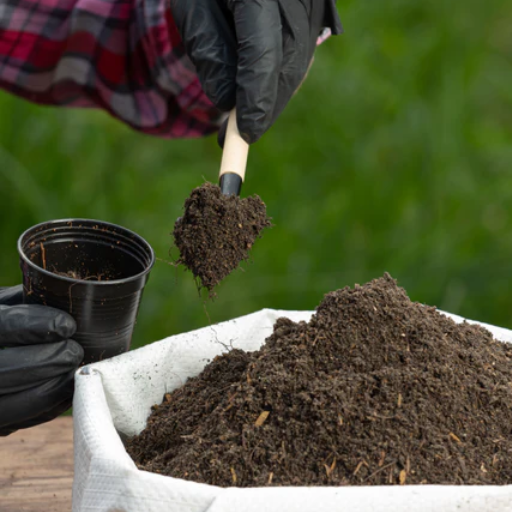
Types of Animal Manure and Their Benefits
Animal manure is the best of all organic soil amendments, which boosts soil fertility and properties by supplying necessary nutrients and organic matter to the soil. Upon learning the specific characteristics of each manure type, the application could be customized to what the soil needs or the crop requires.
- Cattle Manure: It is rich in nitrogen. Therefore, the nutrient profile suits almost all soil types. It is fairly fast-working, making it good for soil aeration and retention of water. Cow manure, when aged or composite, is better for the plants that would otherwise be burnt with fresh manure with high ammonia.
- Poultry Manure: Includes the wastes of chickens and turkeys. Poultry manure has high contents of nitrogen, phosphorus, and potassium; hence, soils that require quick fertility are best suited for it. For that reason, it will always need to be composted before use because of the dangers of excessive nitrogen and pathogens.
- Horse Manure: Elsewhere, this kind of manure is known as horse manure and is pretty much used along with other fertilizers. It, however, provides moderate nutrient levels, with the highest being of nitrogen. It is excellent for gardeners, but the seeds must be destroyed by composting first.
- Sheep’s Manure: Sheep manure is a dense, nutrient-rich fertilizer, especially suited for soils requiring a slow-release nitrogen component. It has a fairly mild odor and is therefore good for use in vegetable gardens and flower beds.
- Goat manure: The composition of nutrients in goat manure is well-balanced; it is especially suitable for sandy soils since it releases nutrients slowly. Manure like this is best applied after composting, which improves its bioavailability and reduces associated risks from pathogens.
- Swine Manure: The nutrient-rich pig manure is supposed to be applied with care because of its high ammonia content, which can potentially degrade the soil if not used properly. Appropriate composting is said to reduce the acid content greatly, which makes setting up safe and effective application of pig manure.
- Rabbit Manure: The only difference that makes rabbit manure stand apart from animal waste is that it can be used directly without composting, owing to its minuscule chance of burning plants. It is full of nitrogen and phosphorus and hence is suitable for applications in promoting vegetable and fruit crop productivity.
Every kind of manure has a specific application between farming and gardening and is therefore effective only if handled and applied properly. It is a general recommendation to compost all types of manure since this assures stability of its nutrients to enrich soil, pathogenic eradication, and consistency of soil formation. When land managers select and implement the appropriate kind of manure, they can work toward optimized soil health and sustainable productivity.
How to Compost Manure for Organic Gardening
Composting manure for organic gardening can only take place if certain protocols are met to ensure that the sanitation has been fulfilled, the nutrients are ideally utilized, and the crops have been grown organically according to specific standards. Composting usually starts with the choice of manure, which could be from herbivorous animals such as cows and horses, chickens, or sheep, for each contains ample nutrients needed by plants, namely nitrogen, phosphorus, and potassium. Other considerations include moisture content, ratios of organic materials, and aeration.
The ideal proportion of carbon to nitrogen in composting rests between 25:1 and 30:1. One way of achieving this ratio is by mixing nitrogen-rich manure with carbonaceous materials like straw, dry leaves, or wood chips. Regular turning of the pile at least once every one to two weeks facilitates oxygenation and even microbial activity throughout the pile. Temperature control is critical; at the temperature range of 131°F to 170°F (55°C to 77°C) for several days, weed seeds and pathogens will be destroyed. At this stage, the compost is regulated as safe for garden use.
After allowing manure full-scale active composting over a period of 15 days or so, a cure should be given for a longer period of two to six months, through which proper curing of the materials should be effected to stabilize them against leaching of nutrients or loss of nitrogen through ammonia volatilization. The compost would be ready when dark, crumbly, and practically odorless-soil amendment will be applied.
Application Techniques for Manure in the Garden
Manure is a complex source of organic matter and nutrients; it must be applied with due care to derive maximum benefits and to avoid potential risks to plants and other components of the environment. Provided below are five detailed techniques for the proper use of manure:
- The Composting of the Manure: The manure should always be composted before how it is application to stabilize nutrients, kill pathogens, and prevent the germination of weed seeds. From various research, it is known that the use of composted manure lowers the chances of nitrogen burn to plants and also improves nutrient availability. This composting process is for a period beginning from 2 months to 6 months; it depends on the material itself and the conditions.
- Application in Fall: Manure should be applied during the fall so that natural decomposition may take place during the winter and the manure can be incorporated into the soil before planting in spring. This practice has been found to limit nitrogen runoff because more nutrients are absorbed into the soil matrix before heavy periods of rainfall.
- Surface Application Followed by Mulching: Manure spread on the soil surface at controlled rates should be mulched to prevent volatilization of nutrients and odors due as it is considered a pollutant. Mulching the manure will also lessen erosion loss potential and help maintain steady moisture and temperature conditions in the soil.
- Incorporating the Manure into the Soil: Increase nutrient efficiency by lightly tilling manure into the soil within 12-24 hours of application, to reduce nitrogen volatilization as ammonia. According to data, manure incorporated retains up to 95% of its nitrogen value compared to surface-applied manure.
- Manure Teas or Liquid Manures: Manure teas are made by steeping manure in water and diluting the nutrient concentration to make them easily available to P. This is useful to deliver nutrients right at the root zone or as a foliar spray, thereby reducing nutrient over-application or runoff risk.
The horticulturists are adopting these practices for better nutrient management, reduction of environmental pollution, and achieving the proper potential benefits of manure as a natural soil amendment.
Liquid Organic Fertilizers
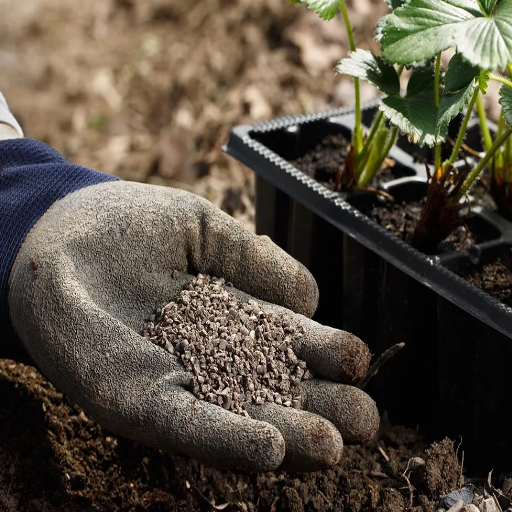
Advantages of Liquid Organic Fertilizers
- Better Nutrient Absorption: Liquid organic fertilizers increase nutrient bioavailability by delivering them directly in soluble forms to the root zone or foliage of the plant. Research has shown that up to 90% of fertilizer nutrients given in liquid form can be absorbed by the plants, while only about 40-50% of nutrients from granular fertilizers are absorbed. This optimum uptake of nutrients leads to better utilization of nutrients.
- Swift Nutrient Delivery: In the liquid state, nutrients move faster into the soil and plants. According to data, liquid fertilizers can provide plants with the essentials within hours after application, thus reducing nutrient deficiency symptoms and promoting the immediate health of plants.
- Lower Environmental Impact: The ease of precision application of liquid organic fertilizers means lots lower chance for nutrients to leach or run off into aquatic systems, hence lowering environmental pollution and in turn aiding sustainable agricultural practices.
- Customizable Formula: Liquid organic fertilizers can be blended to generate nutrient profiles more tailored toward the specific requirements of crops and soil types. These include micronutrient deficiencies such as zinc or iron, which may be tackled much better through a liquid formulation, so that crops get literally exactly the amount of nutrient needed for their growth and eventual productivity.
- Enhanced Soil Microbial Activity: Such liquid organic fertilizers contain organic matter that sustains good soil microbes. These microbes are important for their role in nutrient cycling and in improving soil structure. It has been shown that increased microbial activity results in increased fertility and sustainability of agricultural systems.
With these benefits, the use of liquid organic fertilizers is thus becoming more and more popular in modern horticulture and agriculture, embracing efficiency and sustainability.
How to Create Your Liquid Fertilizer
Making liquid fertilizer at home uses common ingredients and helps reduce pollution. Following is a detailed procedure for preparing an effective and nutrient-rich fertilizer:
- Gather Raw Materials: Collect organic wastes like vegetable scraps, fruit peels, coffee grounds, or grass clippings. Ensure that such ware has not undergone pesticide or chemical treatment to retain the purity of the fertilizer. Nutrient-dense ingredients such as algae, seaweed, or composted manure may be used for imbalance nourishment.
- Prepare the Container: Use a large clean container with a lid for storage and fermentation of the mixture. Ideally, a bucket or plastic bin with a capacity of at least 5 gallons is recommended. Small holes should be drilled into the lid or kept slightly loose to allow the fermentation gases to escape.
- Preparation of Compost Extract: Half-fill the container with the organic matter gathered. Fill the rest of the container with water, keeping about a 1:5 ratio of organic matter to water. Use rainwater or dechlorinated water for maintaining the microbial ecology of the solution.
- Bringing In Microbes: To speed up decomposition of organic matter and release nutrients, add some kind of starter culture; in other words, a little compost or a commercial bioactivator can be thrown in.
- Fermentation: Mix the solution well enough so as to saturate all organic matter. Then the container is left in a shaded place for 1-2 weeks, 60–80°F (15–27°C). Stir it every day to aerate the solution and distribute fermentation evenly. Eventually, everything breaks down and releases nutrients into the solution.
- Straining and Diluting: Once fermentation is complete, use a fine mesh or cloth to strain the liquid into another container. In this step, small solid residues are removed so that nutrient-rich liquid fertilizer remains. In any case, before the liquid fertilizer application, use one part of this concentrate and mix it with 10 parts water to avoid over-fertilization.
- Application: The diluted fertilizer is applied to the soil surface close to plants or diluted further for foliar sprays on leaves. Repeat every 1–2 weeks during the growing season for best results.
Production of an eco-friendly and cost-effective fertilizer is thus supported by this method and is good for sustainable gardening and agricultural practices. Utilization of organic waste reduces negative impact on the environment, whereas creating a connection with closed-loop systems-attaining modern sustainability goals.
Best Practices for Applying Liquid Fertilizers
While applying liquid fertilizers, it is always necessary to dilute them; otherwise, nutrients might overload, or the plants could get damaged. I make sure to read and abide by the manufacturer’s recommendations for dilution ratios, as each formula is different in concentration. Measuring tools are used for actual calibrations so as to ensure uniformity during the preparation procedure, as this is extremely important in driving the results.
The matter of timing has another degree of importance in my practice when working with liquid fertilizers. Applying them during cooler portions of the day, such as early morning or late afternoon, reduces evaporation and enables plants to absorb nutrients properly. The rate of application depends on the growth stage of my plants. That is to say, during their active growth, I apply liquid fertilizers more often to provide for their nutritional needs.
I use an even application of liquid fertilizer because I do not want some plants being under- or over-fertilized over others. A spray bottle or drip irrigation system works well to ensure equal coverage. I watch plants carefully after application for any symptoms of overfertilization with leaf burn or discoloration, so I can make adjustments if and when needed. Following such best practices assures the healthy and sustainable growth of my garden.
References
Frequently Asked Questions (FAQ)
Q: What is the best organic fertilizer for my garden?
A: The best organic fertilizer varies depending on your garden’s specific needs. However, options like homemade compost, kitchen scraps, and organic fertilizers that include compost are typically favored. These fertilizers provide essential nutrients and improve soil structure, making them ideal for both flowering plants and fast-growing plants.
Q: How do chemical fertilizers compare to organic fertilizers?
A: Chemical fertilizers often provide quick results but can harm soil health over time, while organic fertilizers, such as the best organic fertilizer, enhance the soil ecosystem with beneficial bacteria and fungi. Organic options like balanced fertilizers derived from natural sources foster a sustainable gardening approach.
Q: Can I use kitchen scraps as fertilizer?
A: Yes, kitchen scraps are a great component of homemade compost, which is one of the best organic fertilizers. They decompose to release essential nutrients into the soil, promoting a healthy environment for plants, especially in raised beds.
Q: What should I consider when choosing a type of fertilizer?
A: When selecting a type of fertilizer, consider performing a soil test to understand your garden soil’s nutrient levels. Additionally, look for fertilizers that meet organic standards and include nitrogen and potassium for optimal plant growth.
Q: Are there specific organic fertilizers for flowering plants?
A: Yes, some organic fertilizers are specifically formulated for flowering plants. These often contain higher levels of phosphorus, which is essential for blooming. Researching the best fertilizer options can help you choose the right one for your garden needs.
Q: How do cover crops work as fertilizers?
A: Cover crops are planted to improve soil health and fertility when your primary crops aren’t growing. They prevent erosion, suppress weeds, and can fix nitrogen in the soil, making them a valuable part of an organic gardening strategy alongside the best organic fertilizers.
Q: What are the benefits of using organic fertilizers over manufactured fertilizers?
A: Organic fertilizers include natural ingredients that enrich the soil and promote a healthy ecosystem, reducing the reliance on chemical inputs found in manufactured fertilizers. This approach supports sustainable practices and helps maintain a green lawn and flourishing garden.
Q: How do I know if I need a nitrogen fertilizer?
A: If your plants are showing signs of slow growth or yellowing leaves, a nitrogen fertilizer may be necessary. Conducting a soil test can help determine your soil’s nutrient needs and guide you to choose the best organic fertilizer for your garden.
Q: What are some examples of organic fertilizers?
A: Organic fertilizers include compost, manure, fish emulsion, and seaweed extracts. These fertilizers provide a balanced supply of essential nutrients and are often preferred by organic gardeners for their sustainable benefits compared to chemical fertilizers.


